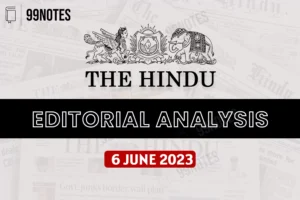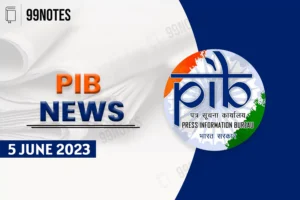8 June 2023 : Daily Current Affairs
DAILY CURRENT AFFAIRS
- DAILY CURRENT AFFAIRS
- 1. Union Cabinet gives nod for a 28.5-km elevated metro line in Gurugram.
- 2. Cyclone may affect course of monsoon
- 3. How can we transition to a low-carbon city?
- 4.India, U.S. review export control regulations
- 5. Mazagon Dock and German firm strike deal on submarines
- 6. NATO to put up biggest air deployment exercise.
- 7. ‘Crop shortages could exacerbate inflation following MSP increases’
- 8. Can you spot the quantum physics around your house?
- For Enquiry
8-June-2023
Daily Current Affairs For UPSC ,Daily Current affairs of The hIndu and Indian Express.
1. Union Cabinet gives nod for a 28.5-km elevated metro line in Gurugram.
Topic: GS3 – Urban development.
Context:
-
-
-
The Centre has approved a new metro line between HUDA City Centre and Cyber City in Gurugram, with a branch line to Dwarka Expressway.
-
-
Issue:
-
-
-
The estimated cost of the project is ₹5,452 crore.
-
The metro line will connect new Gurugram areas with older parts of the city and spur economic activity in the region.
-
It will also provide connectivity to a railway station near Dwarka Sector 101 and eventually with IGI Airport.
-
Metro trains on the line will have a design speed of 80 km per hour and an average speed of 34 km per hour.
-
The project will be executed by the Haryana Mass Rapid Transport Corporation Limited (HMRTC) as a 50:50 Special Purpose Vehicle (SPV) of the Centre and the Haryana government.
-
The European Investment Board and World Bank will provide the loan for the project.
-
-
2. Cyclone may affect course of monsoon
Topic: GS1 – Geography.
Context:
-
-
-
Cyclone Biparjoy in the Arabian Sea has intensified into a ‘very severe cyclone’ and is currently located about 850 km west of Goa.
-
-
Issue:
-
-
-
The cyclone is expected to move northwards and turn towards Oman in the coming days.
-
The cyclone’s movement is expected to help in the onset of the monsoon in Kerala within the next 48 hours.
-
However, experts believe that the cyclone’s presence may result in a sluggish ascent of the monsoon up the Western coast.
-
The cyclone system has detached from the monsoon system, and its impact on the monsoon’s subsequent movement is yet to be determined.
-
Factors such as an exceptionally warm Arabian Sea, a weak monsoon onset, and favorable Madden Julian Oscillation (MJO) conditions in the Indian Ocean are contributing to the cyclone’s development.
-
-
3. How can we transition to a low-carbon city?
Topic: GS3 – Urban development / Sustainable Development
Issue:
-
-
-
The sector-coupling approach refers to integrating mitigation and adaptation options in multiple sectors to decarbonize urban systems and transition to low-carbon cities.
-
Strategies to mitigate excessive energy use vary based on the characteristics of different cities, including their spatial form, land-use pattern, level of development, and state of urbanization.
-
A one-size-fits-all approach may not work for transitioning to a low-carbon city because each city has unique challenges and considerations, such as energy justice and social equity.
-
Making energy governance equitable involves considering the social and environmental fairness of energy-transition policies, addressing energy justice concerns, and ensuring a just transition for communities and sectors that may be disproportionately affected by the shift to renewable energy sources.
-
Solutions that foreground justice include balancing energy supply and demand, addressing concerns related to land dispossessions, poverty concentration, marginalized communities, gendered impacts, and the economic impacts on sectors relying on fossil fuels.
-
Achieving a just transition requires strategic efforts in governance and planning, behavioral shifts, technology and innovation promotion, building institutional capacity, engaging multiple stakeholders in energy governance and decision-making, promoting energy efficiency, scaling up climate investments, and incorporating diverse knowledge streams, including indigenous and local lived experiences.
-
-
4.India, U.S. review export control regulations
Topic: GS2 – International relations.
Context:
-
-
-
India and the U.S. held the inaugural India-U.S. Strategic Trade Dialogue (IUSSTD) to streamline their export control regimes for critical technologies.
-
-
Issue:
-
-
-
The discussions focused on facilitating the development and trade of technologies in critical domains such as semiconductors, space, telecom, quantum, AI, defense, and biotech.
-
Both sides reviewed the bilateral export control regulations with the aim of building resilient supply chains for strategic technologies.
-
The U.S. indicated a softer stance on India-Russia ties, emphasizing that Prime Minister Narendra Modi’s visit would help build trust and confidence in the bilateral relationship.
-
U.S. National Security Adviser Jake Sullivan stated that the U.S. should meet countries like India that have not joined sanctions against Russia, rather than debating them.
-
The U.S.-India partnership was highlighted as being strong in terms of technology, defense cooperation, and people-to-people ties.
-
-
5. Mazagon Dock and German firm strike deal on submarines
Topic: GS3 – security.
Context:
-
-
-
Mazagon Dock Shipbuilders Ltd. (MDL) and Thyssenkrupp Marine Systems (TKMS) have signed a memorandum of understanding (MoU) for partnering in submarine production.
-
-
Issue:
-
-
-
The MoU was signed in the presence of German Minister of Defence Boris Pistorius in Mumbai.
-
The collaboration aims to jointly bid for India’s Project-75I, which involves the construction of six advanced submarines estimated to cost over ₹45,000 crore.
-
TKMS will contribute to the engineering, design, and consultancy support, while MDL will be responsible for constructing and delivering the submarines.
-
The submarines will be built in India and are expected to have a significant amount of local content.
-
The Project-75I is being executed under the Strategic Partnership model of Defence Acquisition Procedure, and the Request For Proposal (RFP) was issued to MDL and Larsen & Toubro in July 2021.
-
The progress of the deal was discussed during talks between German Minister Boris Pistorius and Indian Defence Minister Rajnath Singh, with Pistorius referring to it as a potential “flagship project.”
-
-
6. NATO to put up biggest air deployment exercise.
Topic: GS3 – security.
Context:
-
-
-
Germany is preparing to host the Air Defender 23 exercise, which is set to be the largest air deployment exercise in NATO’s history.
-
-
Issue:
-
-
-
The exercise will take place from June 12 to June 23 and will involve 10,000 participants and 250 aircraft from 25 nations.
-
The purpose of the exercise is to demonstrate a show of force and impress allies as well as potential adversaries.
-
The drill will simulate an attack on a NATO member country and test the response capabilities of the participating nations.
-
The United States will be a major participant, sending 2,000 U.S. Air National Guard personnel and approximately 100 aircraft to take part in the exercise.
-
The exercise is expected to cause some disruption to civilian flights in Europe during the designated period.
-
-
7. ‘Crop shortages could exacerbate inflation following MSP increases’
Topic: GS3 – agriculture & inflation.
Context:
-
-
-
The increase in minimum support prices (MSP) for farm produce will have an inflationary impact and will be considered by the RBI’s Monetary Policy Committee.
-
-
Issue:
-
-
-
The spillover effects on consumer food prices will depend on the government’s procurement strategy and prevailing market prices.
-
If there are output shortages, it could lead to higher prices for crops such as paddy, rice, jowar, bajra, and maize.
-
Inflation in rice is already high at 11%, and an increase in paddy MSP could add to benchmark prices.
-
The size of the crops this season will be crucial in determining the inflationary impact.
-
Economists from the State Bank of India believe that the impact of higher MSPs on inflation will be negligible depending on the prices in the e-National Agriculture Market (e-NAM) and procurement levels.
-
-
8. Can you spot the quantum physics around your house?
Topic: GS3 – Science and technology.
Issue:
-
-
-
Copper, a common material found in wires and cooking utensils, has electrons that can have an effective temperature of at least 50,000° C.
-
Quantum physics explains that electrons are not particles but waves, and their wavelength determines their energy.
-
Electrons in a metal, like copper, want to minimize their energy by having longer wavelengths, but the Pauli exclusion principle requires them to have different wavelengths.
-
The number of electrons in a material determines the energy of each additional electron, and metals have a large number of electrons with high energies.
-
The highest energy electrons in metals have an effective temperature of tens of thousands of degrees Celsius, known as the Fermi energy.
-
Copper has a Fermi energy of 80,000° C, aluminium has 130,000° C, and silver has about 60,000° C.
-
The Fermi energy and fermionic behavior of electrons in metals explain various properties such as reflection of light, electrical conductivity, and heat conduction.
-
Metals are quantum materials that demonstrate the principles of quantum physics in our everyday lives.
-
-
For Enquiry

8 June 2023 : Daily Current Affairs

7 June 2023 : PIB

7 June 2023 : The Hindu Editorial

7 June 2023 : Daily Current affairs

6 June 2023 : PIB

6 June 2023 : Daily Current Affairs

6 June 2023 : The Hindu Editorial

5 June 2023 : PIB

5 June 2023 : The Hindu Editorial

5 June 2023 : Daily Current Affairs
Daily Current Affairs 8 June 2023 : Daily Current Affairs The Hindu Editorial
12-May-2023
Daily Current Affairs For UPSC ,The Hindu Editorial Summary
Facebook-f
Twitter
Youtube
1.Marriage…
PIB 7 June 2023 : PIB PRESS INFORMATION BUREAU
7-June-2023
Daily Current Affairs For UPSC ,The PIB ( Press Information Bureau…
The Hindu 7 June 2023 : The Hindu Editorial The Hindu Editorial
7-June-2023
Daily Current Affairs For UPSC ,The Hindu Editorial Summary
Facebook-f
Twitter
Youtube…
Daily Current Affairs 7 June 2023 : Daily Current affairs DAILY CURRENT AFFAIRS
7-June-2023
Daily Current Affairs For UPSC ,Daily Current affairs of The hIndu…
PIB 6 June 2023 : PIB PRESS INFORMATION BUREAU
6-june-2023
Daily Current Affairs For UPSC ,The PIB ( Press Information Bureau…
Daily Current Affairs 6 June 2023 : Daily Current Affairs DAILY CURRENT AFFAIRS
6-June-2023
Daily Current Affairs For UPSC ,Daily Current affairs of The hIndu…
The Hindu 6 June 2023 : The Hindu Editorial The Hindu Editorial
6-June-2023
Daily Current Affairs For UPSC ,The Hindu Editorial Summary
Facebook-f
Twitter
Youtube
1….
PIB 5 June 2023 : PIB PRESS INFORMATION BUREAU
5-June-2023
Daily Current Affairs For UPSC ,The PIB ( Press Information Bureau…
The Hindu 5 June 2023 : The Hindu Editorial THE HINDU EDITORIAL
5-June-2023
Daily Current Affairs For UPSC ,The Hindu Editorial Summary
Facebook-f
Twitter
Youtube…
Daily Current Affairs 5 June 2023 : Daily Current Affairs DAILY CURRENT AFFAIRS
5-June-2023
Daily Current Affairs For UPSC ,Daily Current affairs of The hIndu…



